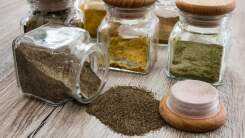How Long Are Dried Beans 'Good' For?
My concept of food going “bad” is simple: If it doesn’t smell weird, feel stickier than it should, or have mold growing on it, it’s probably fine! But some foods, like flour or dried beans, are a little trickier. Dried beans will never go so “bad” that they’ll cause great physical distress—though they can make you gassy no matter their age, which can be distressing.
The more recently your beans were dried, the creamier they will be once cooked, and the quicker they will get there. According to the bean geniuses at Rancho Gordo, the definition of “fresh” is very lenient:
Heirloom and heritage varieties don’t need a lot of fussing if they are used fresh, which I’d define as within two years.
Two years, which is also the amount of bean-storage time the FDA recommends, is plenty of time to use a bag of beans. If your beans aren’t heirloom, and you don’t know when they were dried, I’d shorten that window of “freshness” to a single year for the best tasting beans.

Keeping them in a dark, dry, cool place will extend their life, so moving them out of a bag and into an airtight container is always a good move. If you’re unlikely to remember how long ago you bought a bag of beans—and I know I am—just write the date on the bag (or the container you transfer them to).
If you happen to find a container of beans you forgot about, you can always try and cook them, even if you suspect they are more than a couple of years old. Give them a good once over and make sure they aren’t moldy, buggy, or smelly (and toss them if they are). Once you’re sure your beans aren’t full of bugs, you can cook them. You just might have to cook them a lot more.
Overnight soaking, pressure cooking, extra simmering, and baking soda can all help soften too-tough beans, and soaking is a good way to weed out the stubborn tough guys—if any look shriveled after a prolonged soak, toss them.
If you don’t feel like dealing with all that, you can always use them as pie weights. Pie season is rapidly approaching, and one can never be too prepared for pie season.
RECOMMENDED NEWS

Make Rounder, Prettier Truffles With a Melon Baller
2025-10-17

‘Cage-Free’ Is Basically Meaningless, and Other Lies Your Egg Carton Is Telling You
2025-10-14

The Easiest Way to Test (and Use Up) Your Old Spices
2025-10-15

It's Almost Too Easy to Make Your Own Kettle Corn
2025-10-15

All the Ways You Can Microwave an Egg
2025-10-18

A cut of grilled beef plated next to a salad
2025-10-15
Comments on "How Long Are Dried Beans 'Good' For?" :